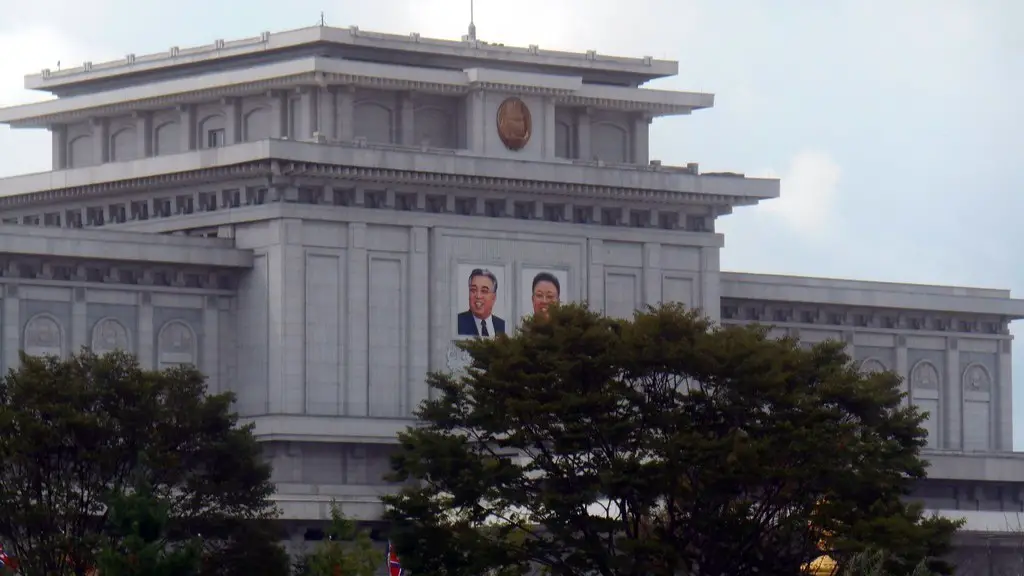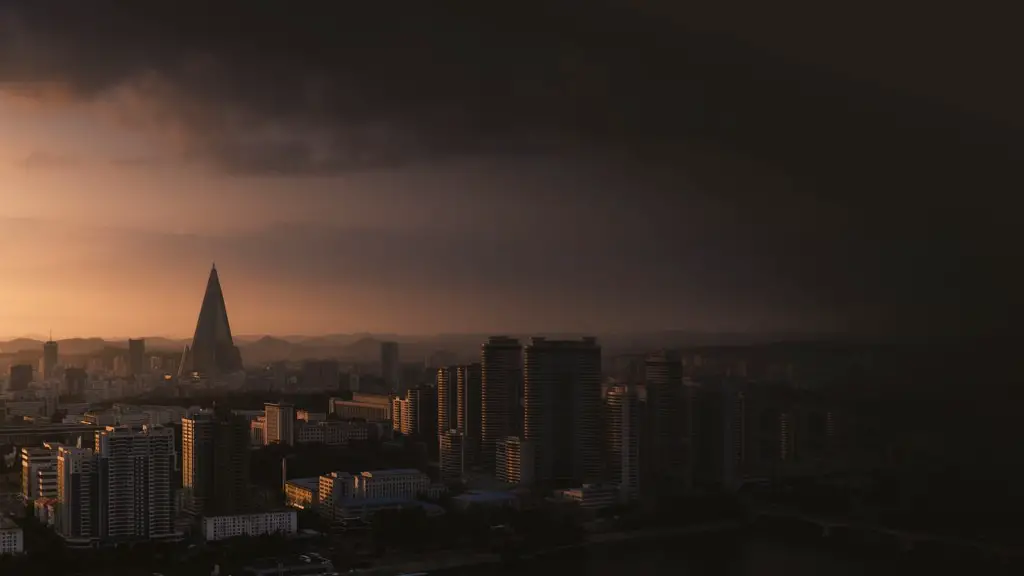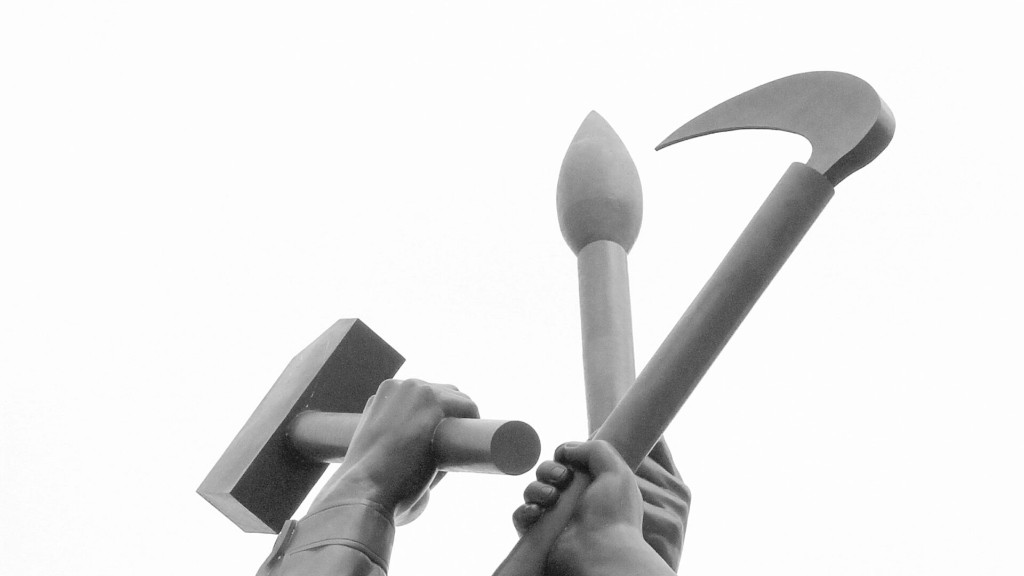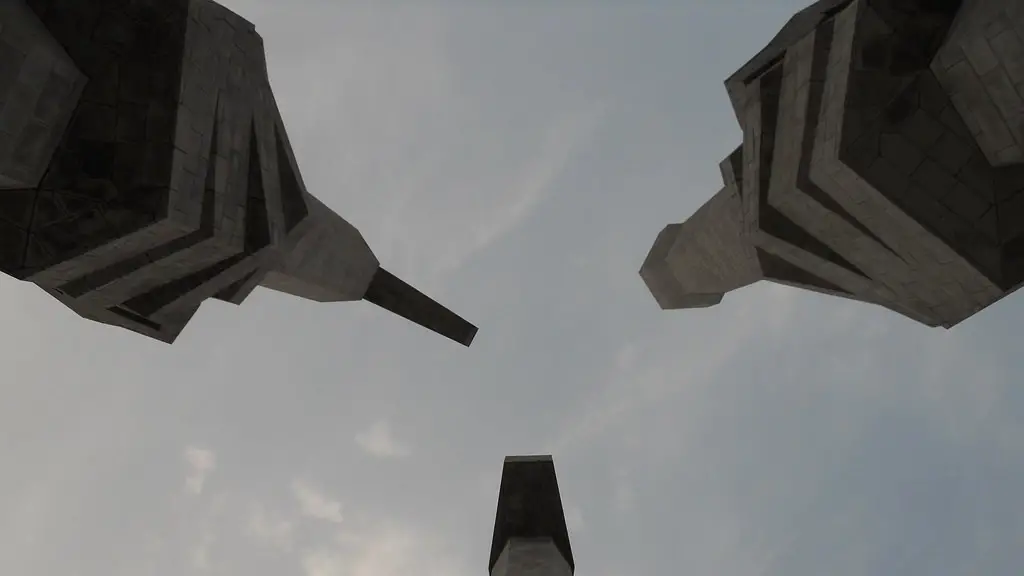History of the North Korean Armed Forces
The North Korean armed forces are one of the largest military forces in the world. With an estimated 1.2 million personnel, it is the fourth-largest standing army in the world. North Korean armed forces trace their beginning to the Korean People’s Revolutionary Army, which was formed in 1945 during the Korean War. The Korean People’s Revolutionary Army was reorganized in 1948 and became the Korean People’s Army. The Korean People’s Army is the main source of personnel for the current North Korean armed forces.
Since its establishment, the North Korean armed forces has grown significantly in size and scope. North Korea currently has five branches of the military: The Korean People’s Army Ground Force, the Korean People’s Navy, the Korean People’s Air Force, the Korean People’s Strategic Rocket Forces, and the Korean People’s reserves.
The Pyongyang government invests heavily in its military forces, providing personnel with advanced equipment, such as ballistic missiles and nuclear weapons. North Korea also possesses an arsenal of conventional weapons, including tanks, attack helicopters, long-range artillery, and surface-to-air missiles.
North Korea’s Million-Man Army
North Korea is believed to have a million-man army, which includes active-duty soldiers, reservists, and paramilitary personnel. According to reports from the South Korean Ministry of National Defense, the army consists of approximately 1.21 million personnel. The North Korean military is considered to be one of the most highly trained and motivated forces in the world, with a focus on discipline, loyalty, and dedication.
The North Korean military is largely composed of conscripts, who typically serve for a period of five years. Men between the ages of 16 and 25 are obligated to fulfill the nation’s mandatory military service policy. The conscripts make up around 70% of the million-man army. The military also includes special operations forces and paramilitary personnel who are trained for more specialized tasks.
North Korea’s million-man army is divided into five branches. The Korean People’s Army (KPA) Ground Force is the largest branch, consisting of over 700,000 personnel. The Korean People’s Army Navy has approximately 60,000 personnel and is responsible for the protection of North Korea’s territorial waters. The Korean People’s Air Force has an estimated 55,000 personnel, equipped with fighter jets, bombers, and other aircraft. The Korean People’s Strategic Rocket Forces consists of around 18,000 personnel and is tasked with the deterrence of North Korea’s nuclear weapons.
The Costs of Maintaining North Korea’s Million-Man Army
It is estimated that the North Korean government spends close to 25% of its budget on military expenditures. North Korea’s military spending is one of the highest in the world and it continues to increase each year. This expense has had a significant impact on the country’s economy, leaving little for investment in technology, health care, or infrastructure.
North Korea also spends large amounts of money to maintain its million-man army. Recruitment drives and military training cost the government millions of dollars each year. The government also provides housing, food, medical care, and other benefits for its personnel. The military also receives a generous supply of weapons, from small arms to missiles and nuclear weapons.
The high cost of maintaining the million-man army has resulted in cuts to other areas of the economy. North Korea is a cash-strapped nation, relying heavily on international aid to fund its military. This has a negative effect on the country’s overall development and hinders progress.
The Human Rights Concerns Over North Korea’s Million-Man Army
The use of mandatory military service has been criticized by human rights activists as a violation of freedom and basic human rights. In addition, reports from defectors and other sources indicate that the North Korean armed forces are subject to a regime of control, brutality, and fear. There have been allegations of torture, abuse of power, and arbitrary detention of North Korean personnel.
The North Korean regime also has a long history of abuses against its soldiers. Reports indicate that the regime imposes harsh working conditions and low pay, while rewarding loyalty and obedience with privileges. The regime also monitors the communications and movements of its personnel, leading to an atmosphere of paranoia and distrust.
Human rights groups such as Amnesty International and Human Rights Watch have expressed their concerns over the situation and urged North Korea to take steps to improve the rights of its personnel and to address the human rights issues within its armed forces.
The International Repercussions of North Korea’s Million Man Army
The large size of the North Korean military has caused international concern, as the regime’s pursuit of nuclear weapons and long-range missiles has raised tensions in the region. This has led to increased sanctions from the United Nations and other countries, which has further isolated the regime and limited its access to international markets.
The United States and other countries have expressed concerns that the million-man army poses a threat to regional security and stability. The regime’s pursuit of nuclear weapons has prompted calls for disarmament, while the humanitarian situation in the country has sparked criticism from world leaders.
The North Korean regime has consistently refused to cooperate with international organizations, which has led to diplomatic deadlock. North Korea has also stepped up its military drills in recent years, in an attempt to demonstrate its military capabilities and assert its presence in the region.
The Impact of North Korea’s Million Man Army on the People
The high cost of maintaining the million-man army has had a negative impact on the North Korean people. The majority of the military budget is spent on personnel, leaving little for investment in technology, health care, infrastructure, or other areas of development.
The regime’s militarization has also driven up the cost of living for the average North Korean. The price of basic goods and services has soared in recent years, as the economy is unable to cope with the strain of the large military. This has had a detrimental effect on the lives of many North Koreans.
The policies of militarization have also deterred foreign investment, as many countries are reluctant to invest in a country with such a large and powerful military. This has further hindered the growth of the North Korean economy and made life more difficult for the average North Korean.
The Future of North Korea’s Million Man Army
The North Korean military is unlikely to decrease in size in the near future. The Pyongyang government is committed to maintaining its military forces and has continued to invest in its personnel, equipment, and infrastructure. It is likely that the regime will continue to prioritize its military over other areas of the economy.
The North Korean military’s large size also means that it is unlikely to participate in any major military operations. The country’s nuclear weapons and long-range missiles are effective deterrents, and the regime is unlikely to risk a war.
In the long term, however, the future of the million-man army will depend on the future of the North Korean regime. The country’s economic and political situation are uncertain and it is impossible to predict what will happen in the future.
The Impact of Technology on North Korea’s Million Man Army
North Korea has embraced technology in its quest to build a formidable military force. The North Korean regime has made investments in technology to improve its military capabilities, including aircraft, missiles, and nuclear weapons. Modern technology has also changed the way North Korea’s military operates, with the regime relying on advanced systems to coordinate its operations and keep personnel in line.
The North Korean military also relies heavily on cyber ideas to monitor its personnel and maintain internal security. The regime has developed its own surveillance network, which it uses to spy on its citizens and track the movements of its personnel. This has raised privacy concerns among international observers.
The North Korean military has also taken steps to upgrade its conventional forces with the help of new technology. The regime has invested in sophisticated equipment, such as tanks and helicopters, and has developed new tactics and strategies to better utilize its personnel.
New technology has also provided North Korea with a means of developing its weapons program. The regime has used technology to advance its nuclear and missile capabilities, which has raised tensions in the region and prompted calls for disarmament.
Conclusion on North Korea’s Million Man Army
North Korea’s million-man army is a formidable force in the world. The regime has made massive investments in its military, including conventional and nuclear weapons, and has built a highly-trained, motivated force. However, this comes at a high cost, and the human rights implications of the million-man army have been a cause for concern.
The million-man army has also had an impact on international relations, as its pursuit of weapons of mass destruction has heightened tensions in the region. In the future, it is uncertain how the situation will evolve, as the future of the North Korean regime remains uncertain.





